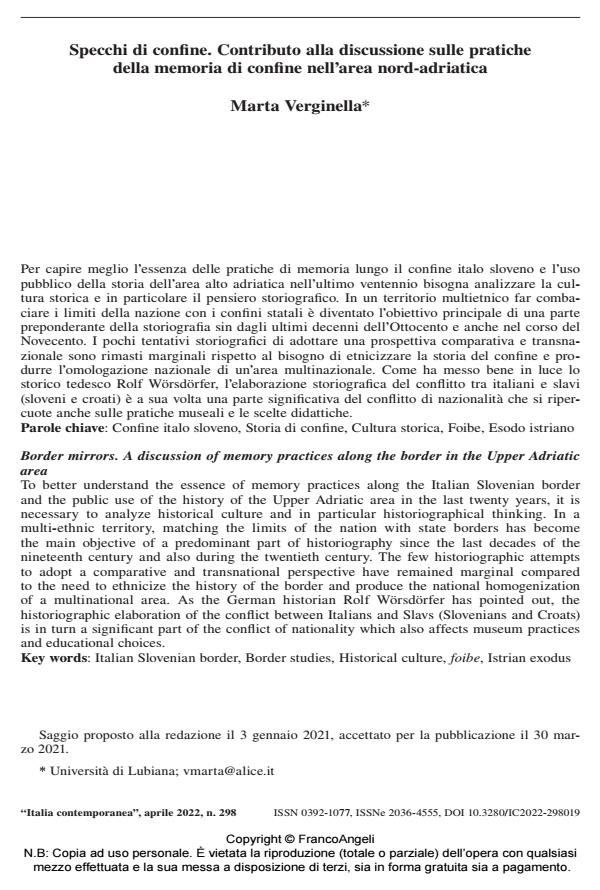Border mirrors. A discussion of memory practices along the border in the Upper Adriatic area
Journal title ITALIA CONTEMPORANEA
Author/s Marta Verginella
Publishing Year 2022 Issue 2022/298
Language Italian Pages 13 P. 256-268 File size 154 KB
DOI 10.3280/IC2022-298019
DOI is like a bar code for intellectual property: to have more infomation
click here
Below, you can see the article first page
If you want to buy this article in PDF format, you can do it, following the instructions to buy download credits

FrancoAngeli is member of Publishers International Linking Association, Inc (PILA), a not-for-profit association which run the CrossRef service enabling links to and from online scholarly content.
To better understand the essence of memory practices along the Italian Slovenian border and the public use of the history of the Upper Adriatic area in the last twenty years, it is necessary to analyze historical culture and in particular historiographical thinking. In a multi-ethnic territory, matching the limits of the nation with state borders has become the main objective of a predominant part of historiography since the last decades of the nineteenth century and also during the twentieth century. The few historiographic attempts to adopt a comparative and transnational perspective have remained marginal compared to the need to ethnicize the history of the border and produce the national homogenization of a multinational area. As the German historian Rolf Wörsdörfer has pointed out, the historiographic elaboration of the conflict between Italians and Slavs (Slovenians and Croats) is in turn a significant part of the conflict of nationality which also affects museum practices and educational choices.
Keywords: Italian Slovenian border, Border studies, Historical culture, foibe, Istrian exodus
Marta Verginella, Specchi di confine. Contributo alla discussione sulle pratiche della memoria di confine nell’area nord-adriatica in "ITALIA CONTEMPORANEA" 298/2022, pp 256-268, DOI: 10.3280/IC2022-298019